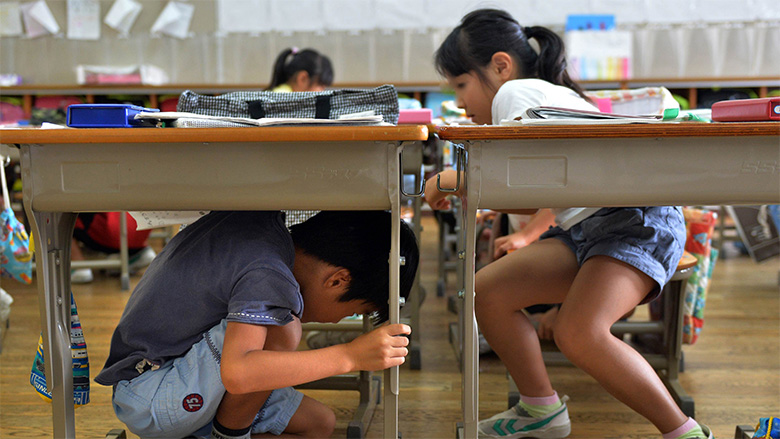Tokyo, Japan, November 2, 2016 – The Great Hanshin-Awaji Earthquake of 1995 caused widespread loss of life and destruction in and around the city of Kobe. Almost 4,000 schools were destroyed. It was a wakeup call for the Government of Japan, and created the political will to accelerate a national program that over time would make almost every school resilient to the impact of earthquakes.
A new report developed by the Global Facility for Disaster Reduction and Recovery (GFDRR)'s Global Program for Safer Schools, in partnership with the Japan-World Bank Program for Mainstreaming DRM in Developing Countries, examines the program implemented by Japan’s Ministry of Education, Culture, Sports, Science and Technology (MEXT) to improve the structural safety of thousands of schools across the country.
What Insights Can Be Drawn from the Japanese Experience?
- Disasters can create momentum for increased action: While the 1995 Great Hanshin-Awaji Earthquake triggered a comprehensive assessment of the safety of existing schools and an increase in subsidies to local governments for retrofitting, the national school retrofitting program finally gained significant momentum in 2002. Other earthquakes, such as the 2004 Chuetsu Earthquake and the 2008 Sichuan Earthquake in China, convinced decision-makers to make more financial resources available and to strengthen the capacity of local governments to accelerate implementation.
- Financial and technical support from the national government to local governments can accelerate implementation and ensure quality: As the financial resources required for implementation of the program exceeded the budget of most local governments, the national government offered subsidies to cover 2/3 of the costs for retrofitting and 1/2 for reconstruction. At the same time, MEXT provided optional financing schemes, including the option for local governments to issue bonds and raise taxes to raise additional financial resources. As a result, the financial burden on local governments was limited to 6.7-10% of the total costs. In addition to financial support, MEXT, in partnership with other entities such as the Japan Building Disaster Prevention Association (JBDPA), also developed detailed technical guidelines and offered training to local governments.
- Reporting on progress is key: MEXT ranked prefectures and municipalities by percentage of earthquake-resistant school buildings and issued press releases and made other information on progress available to inform citizens which prefectures and municipalities were lagging behind. Once this information was made public, local authorities often took immediate action to avoid criticism from the community.
- Combining retrofitting with general modernization of schools is cost-effective: To achieve retrofitting targets each year, MEXT sometimes postponed general improvement of existing schools. As a result, some schools – mostly older buildings – will have to go through further rehabilitation about 10 years after the seismic retrofitting has been carried out. This approach is expensive and burdensome to schools.
These are just some of the findings of the report. The report also highlights remaining challenges such as improving the functionality of schools as emergency shelters in the event of a disaster and paying attention to non-structural elements of school buildings. Finally, the 2011 Great East Japan Earthquake demonstrated the need to make schools also resistant to other disasters such as tsunamis.




